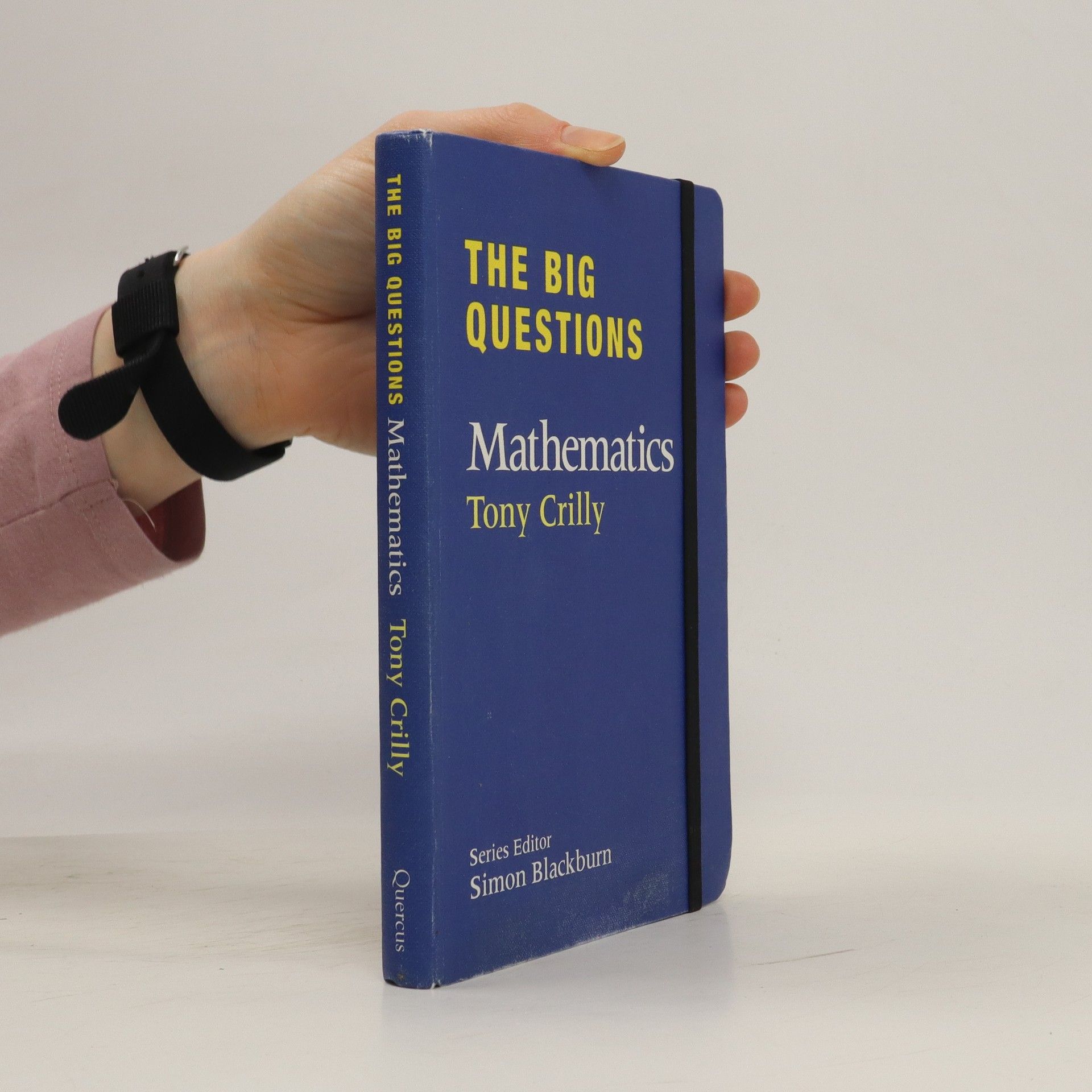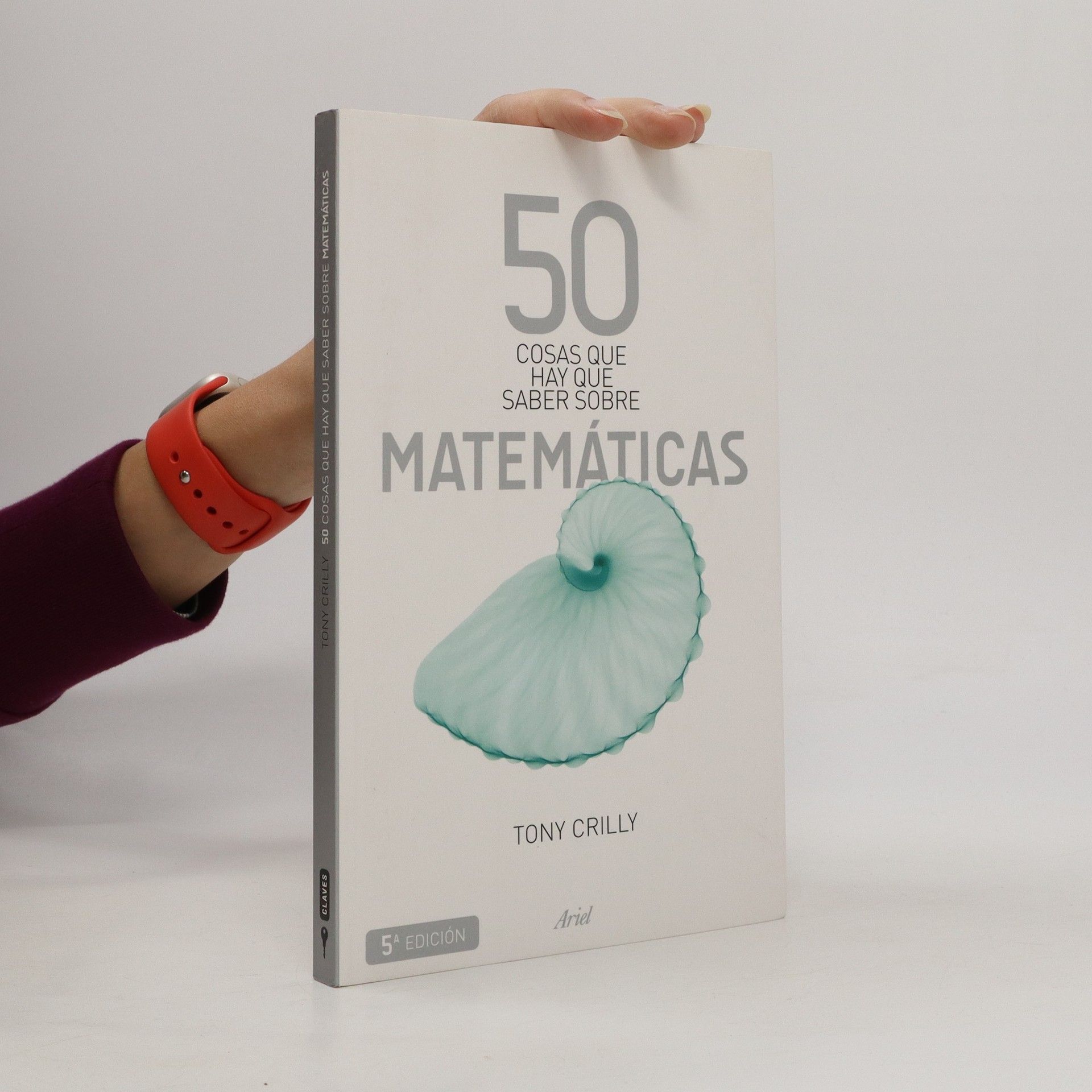¿Quién inventó el número cero? ¿Por qué hay 60 segundos en un minuto? ¿Cómo es de grande el infinito? ¿Dónde se cruzan las líneas paralelas? ¿Es cierto que el aleteo de una mariposa puede causar una tormenta en la otra punta del mundo? En 50 cosas que hay que saber sobre matemáticas, el profesor Tony Crilly explica 50 conceptos matemáticos -antiguos, modernos, cotidianos y esotéricos- que nos permitirán entender y dar forma al mundo que nos rodea. Empezando por el número cero, 50 cosas que hay que saber sobre matemáticas: Introduce los orígenes de las matemáticas, desde las fracciones egipcias hasta los números romanos Define el casi místico significado de pi y de los números primos, de los números de Fibonacci y de los rectángulos áureos Explica todo aquello que no enseñan en el colegio, lo que se puede llegar a hacer con el cálculo, la estadística y el álgebra, y la verdadera utilidad de los números imaginarios Ilumina sobre las grandes ideas de la relatividad, la teoría del caos, los fractales, la genética y el ciberespacio Desvela el razonamiento oculto que hay detrás del Sudoku, la lotería, los juegos de azar y el interés compuesto Explora los últimos descubrimientos, entre ellos la resolución del último teorema de Fermat y la pregunta del millón sobre la teoría de Riemann
Tony Crilly Libros





Mathematics
- 208 páginas
- 8 horas de lectura
Maths demystified - the answers to twenty questions anyone might ask.
Mathematik
- 208 páginas
- 8 horas de lectura
Die großen Fragen behandeln grundlegende Probleme und Konzepte in Wissenschaft und Philosophie, die Forscher und Denker seit jeher umtreiben. Anspruch der ambitionierten Reihe ist es, die Antworten auf diese Fragen zu präsentieren und damit die wichtigsten Gedanken der Menschheit in einzigartigen Übersichten zu bündeln. Im vorliegenden Band Mathematik , der einen Bogen spannt vom Beginn des Zählens und den idealen Platonischen Körpern bis zur Chaostheorie und dem Fermat’schen Theorem, setzt sich Tony Crilly mit jenen 20 Fragen auseinander, die das Herz der Mathematik und unseres Verständnisses der Welt bilden. Wofür ist Mathematik gut? Woher kommen die Zahlen? Warum sind die Primzahlen die Atome der Mathematik? Welches sind die seltsamsten Zahlen? Sind die imaginären Zahlen tatsächlich imaginär? Wie groß ist die Unendlichkeit? Wo treffen sich zwei parallele Geraden? Was ist die Mathematik des Universums? Ist die Statistik nur Lüge? Kann die Mathematik Reichtümer garantieren? Gibt es für alles eine Formel? Warum sind drei Dimensionen nicht genug? Kann ein Schmetterling wirklich einen Hurrikan verursachen? Können wir einen Code entwerfen, der nicht zu knacken ist? Ist Mathematik schön? Kann die Mathematik die Zukunft vorhersagen? Welche Gestalt hat das Universum? Was ist Symmetrie? Ist die Mathematik wahr? Gibt es noch ungelöste Probleme?
Kto wynalazł zero? Dlaczego minuta ma 60 sekund? Jak duża jest nieskończoność? Gdzie przecinają się proste równoległe? I czy skrzydło motyla naprawdę może wywołać sztorm gdzieś w odległym zakątku świata? W 50 krótkich i przystępnie napisanych esejach autor wyjaśnia wiele fundamentalnych pojęć matematycznych - teoretycznych i praktycznych, banalnych i specjalistycznych - które pozwalają zrozumieć i kształtować świat wokół nas. Odsłania tajemnice sudoku i łamania szyfrów, loterii i hazardu, zarządzania finansami i procentu złożonego. Przedstawia najnowsze zagadnienia matematyczne, w tym rozstrzygnięcie wielkiego twierdzenia Fermata i wartą milion dolarów hipotezę Riemanna. Trudno matematykę przedstawić prościej! Książka, pełna rysunków i wykresów, przykładów i anegdot, daje doskonały przegląd tej dziedziny nauki.